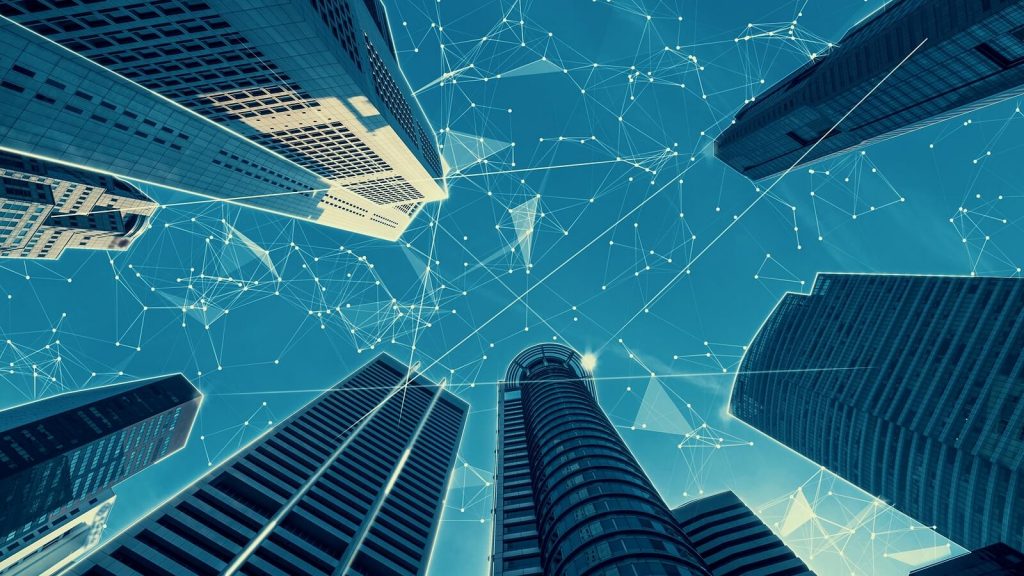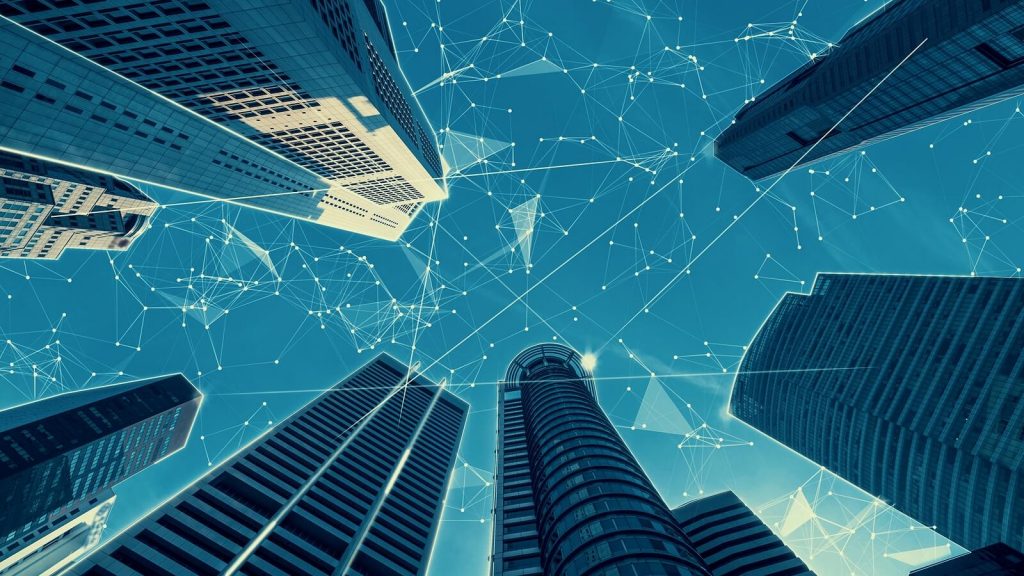
Smart cities have been a hot topic for many years. Smart cities are hailed as the panacea for urbanization’s problems. As more people move to urban areas, negative outcomes like pollution, inefficient energy use, crime, inadequate infrastructure, and poor mobility are likely to rise. Smart city solutions allow cities to grow sustainably while improving the lives of their residents. While there’s been much talk about smart cities there is no consensus on what makes a city smart. All indices used to measure the smart city status are based on different parameters. What are the characteristics of a smart town?
Frost and Sullivan is a leading consultancy firm that has provided one of most coherent perspectives on smart city features. Eight key features define a smart city. These include smart buildings, smart infrastructures, smart energy, intelligent technology, mobility, healthcare, smart governance and smart citizens.
We will examine in detail each feature of a smart town.
- Smart Building
Commercial buildings in smart cities are constantly evolving to meet the needs of workplaces and technology changes, while also presenting opportunities for increased productivity and efficiency. In a smart city, industries and companies demand flexible facilities that can serve as virtual portals for connecting people in an office or worldwide. Smart buildings integrate systems and people in a functional and dynamic way. The challenge for building owners is to provide safe and secure environments as well as functional spaces, network connectivity and IoT setups that enable improved productivity.
Implementing risk management is the first step to creating a safe and secure environment. It is done through a multi-layered approach, which allows you to detect, prevent, and defend entry in each layer of the smart building. Different parts of the building adopt different security solutions, such as integrated access control systems, video surveillance and fire protection.
High-performance fiber optical systems are essential to the operation of smart buildings. It supports multiple applications, eliminates network downtime and can cope with increased bandwidth. A versatile physical layer network depends on a universal wiring topology, well designed network flexibility, wireless mobile, media selection and multi-application support. To improve productivity and efficiency, hardware and software have to work together.
Smart buildings need to be able support BYOD environments (Bring Your Own Devices) and collaborative communication. The smart buildings must also overcome the limitations of legacy systems, and meet regulatory compliance.
Space optimization in smart buildings is crucial, as more people are confined to smaller areas and there is a greater need for flexible, collaborative workspaces. Optimizing the workspace and building increases productivity and efficiency. The building’s efficiency can be improved by using 5G WiFi and fixed network connectivity.
By enabling the IoT within a building, real estate managers can analyze their environment and make real-time changes that improve efficiency and productivity. True smart buildings are able to address challenges such as open architecture, supplier integration and IP platform migration. IoT enabled environments simplify tasks such as risk management, network efficiency, worker productivity and space utilization.
- Smart Infrastructure
Smart cities are characterized by rapid changes in the industries, grids and buildings. Simple, centralized legacy energy systems transform into complex distributed systems that create opportunities. Buildings, for example, can transform from passive into smart and even become both energy producers and consumers. In a smart city, buildings are active components of the energy system. City officials will need to adopt a new mindset.
Smart Cities are a way to improve infrastructure, service delivery, and information by leveraging data, technology, and information. Access to water, affordable housing, education, health, and IT services are all part of this. The ecosystem should intuitively respond and assist citizens in using their resources sustainably.
- Smart Mobility
Managing urban mobility is one of the most complex challenges we face today. The new mobility options, such as car-sharing and ride-sharing, are not always the best solution. With car sharing, for example, you’ll have to search for parking and drive to it, and you won’t be guaranteed to get a car at the time you need one. Ride-sharing does not allow for optimal vehicle occupancy, so you end up with more vehicles than necessary. Ride-sharing can also cause conflict between ride-sharing operators and regular public transport operators in many cities. How can a city develop a model of urban mobility that meets the needs and wants of its citizens, then?
Mobility in the future will include self-driving cars, electric buses and cars, ride-sharing systems, hyperloop intracity transit systems and e-bikes. All of these ideas are in their early stages of implementation, piloting, or development. Smart mobility is changing the way city residents spend their time, commute and enjoy their lives.
Smart mobility is more than just cool new ways to commute. Smart mobility is more than just cool new ways of commuting. Smart mobility includes applications for booking travel that use digital money, and technology to connect travel infrastructure with citizens. This includes predictive analytics systems to coordinate public transport vehicles and ensure their availability at the time of need.
Smart cities offer a variety of modes of transportation. Smart parking, intelligent traffic management and multi-modal transportation are all initiatives that enhance urban mobility.
Residents can also walk or bike in the city.
- Smart Energy
Smart cities do not use conventional power. The national grids have been upgraded and the energy assets decentralized. Electric vehicles are also on the rise. Smart energy is the move towards an energy infrastructure that is more efficient, has new revenue potential and a cleaner environment.
Smart cities can benefit from smart energy in five ways: cost savings, decarbonization of the city’s energy, greater resilience and increased capacity.
Smart energy is a way to ensure that cities can use the best technology for new urban development while also considering the lifecycle value of the inputs.
Cities can develop new income streams and tradeable assets by controlling their energy assets. Energy assets can be collected and turned into micro-energy station that returns excess energy back to the grid.
Smart energy can save a lot of money on infrastructure, both public and private. Smart energy applications help cities understand their energy profile. Officials are able to understand the daily fluctuations, dominant loads and prioritise reduced consumption. Load shifting and demand side response are two methods that can reduce costs. They help to avoid peak usage times and the associated costs.
Rapid urbanization is a major cause of pollution. Climate emergencies have been declared in many cities. Smart energy allows large-scale decarbonization.
Smart energy is a key to democratizing energy consumption. The technological and logistical barriers to accessing energy are removed.
Decentralization also increases energy’s resilience. Smart energy policies are able to deal with the intermittent power balance of renewable and new energy sources while protecting essential supply.
- Smart Technology
Smart cities use technology to improve quality of life and alleviate problems brought on by urbanization. In a smart city, technology is used to reduce waste during construction, renovation, and destruction of buildings, as well as manage scarce water resources.
- Smart Healthcare
Smart cities use the IoT to improve access to high-quality health care, reduce costs, and track patients, equipment, workers, and more. The possibilities for smart healthcare are endless.
Data collection and wellness tracking are made possible by extending healthcare to the home, in smart cities. This new development has a profound impact on chronic disease management. These data are seamlessly integrated into electronic records, allowing doctors the ability to monitor patients remotely in real time. Telemedicine is becoming more popular in smart cities. Patients can now consult doctors at home.
Virtual reality, a 3D artificial environment created by superimposing digital images on live content, and augmented reality, which uses digital images overlaid onto a live video, are two of the most popular technologies in use today. In smart healthcare, they are used to treat addictions, phobias and post-traumatic disorder. The use of these devices is also used to teach medical students anatomy and surgical techniques.
Artificial Intelligence, in conjunction with Natural Language Processing (NLP), provides clinical decision-support. AI may be able to break down boundaries in future smart cities in ways currently unimaginable.
- Smart Governance
Smart cities have increased public participation by utilizing e-government initiatives and tools. Most government services are delivered online using smartphones and other digital devices. Public services are now more transparent, affordable, and accountable.
Smart cities are places where residents actively participate in the governance of their city and give feedback through various digital channels.
- Smart Citizen
Smart citizens are one of the most important features of an intelligent city. Smart citizens make smart cities. Smart cities of the first generation have often neglected to consider this human element. It’s illogical to surround humans with technology when they do not know how to use them. If citizens don’t know how to use a platform for intelligent public transport scheduling, they may continue using old-fashioned commute methods. The human element doesn’t only mean that residents can use information. They can also contribute to the development of smart cities. The government must develop elaborate civic education programs to empower citizens in the use of smart technologies.
